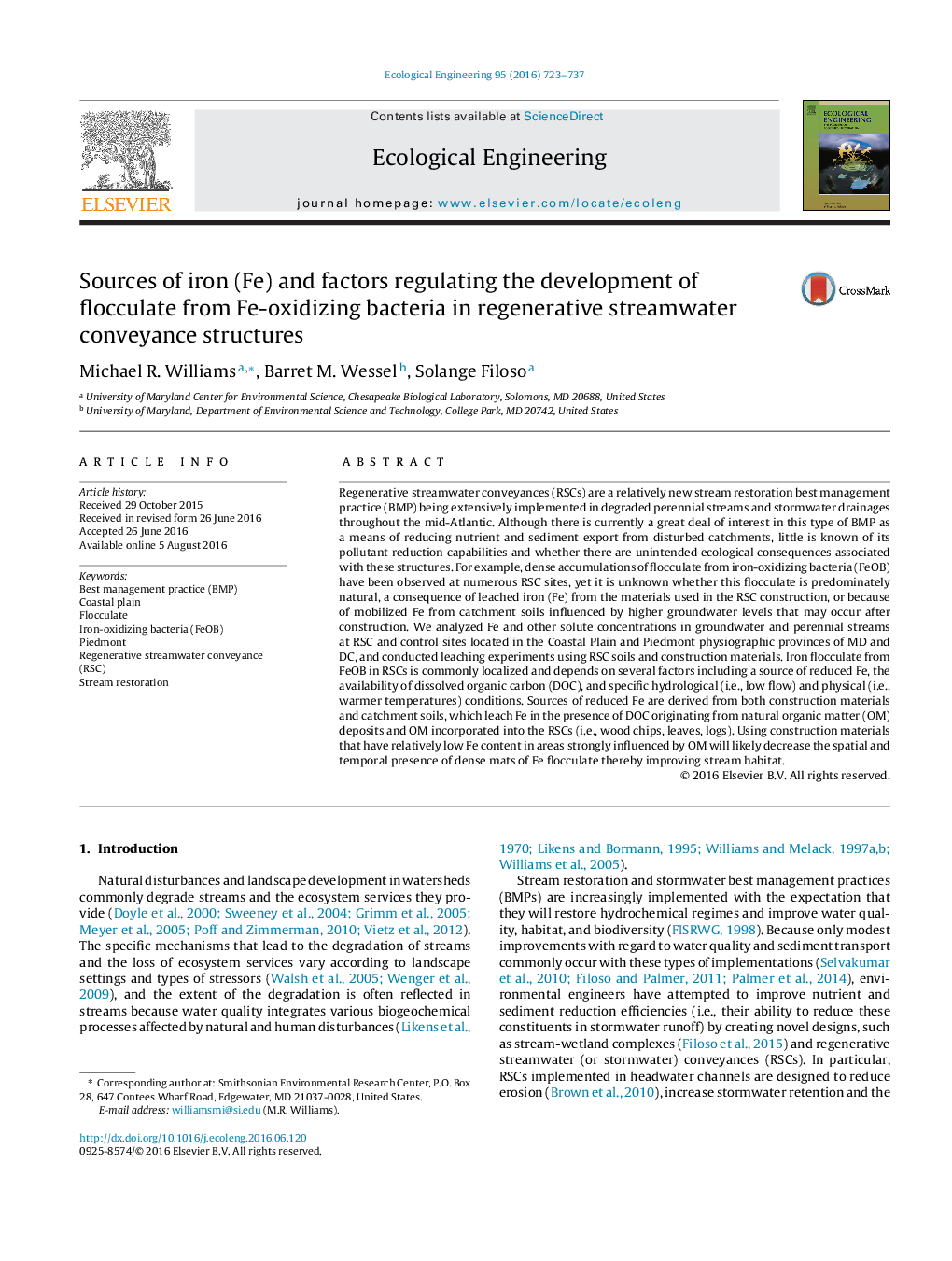| کد مقاله | کد نشریه | سال انتشار | مقاله انگلیسی | نسخه تمام متن |
|---|---|---|---|---|
| 4388503 | 1618004 | 2016 | 15 صفحه PDF | دانلود رایگان |

• RSCs implemented in degraded stream reaches create a series of step pools that can decrease stormflow velocities and nutrient and sediment loads.
• Organic matter (OM) and iron (Fe)-rich substrates used in construction increase dissolved organic carbon (DOC) and Fe concentrations in stream water.
• Some Fe in stream water is used by iron-oxidizing bacteria (FeOB) in the low-flow environments of RSCs to make Fe flocculate.
• Fe flocculate generally does not have a large impact on stream habitat, but localized, dense mats sometimes occur that embed stream habitat.
• Considering the quality and strategic use of Fe-rich substrates and prevalence of OM in RSCs will likely decrease the incidence of flocculate.
Regenerative streamwater conveyances (RSCs) are a relatively new stream restoration best management practice (BMP) being extensively implemented in degraded perennial streams and stormwater drainages throughout the mid-Atlantic. Although there is currently a great deal of interest in this type of BMP as a means of reducing nutrient and sediment export from disturbed catchments, little is known of its pollutant reduction capabilities and whether there are unintended ecological consequences associated with these structures. For example, dense accumulations of flocculate from iron-oxidizing bacteria (FeOB) have been observed at numerous RSC sites, yet it is unknown whether this flocculate is predominately natural, a consequence of leached iron (Fe) from the materials used in the RSC construction, or because of mobilized Fe from catchment soils influenced by higher groundwater levels that may occur after construction. We analyzed Fe and other solute concentrations in groundwater and perennial streams at RSC and control sites located in the Coastal Plain and Piedmont physiographic provinces of MD and DC, and conducted leaching experiments using RSC soils and construction materials. Iron flocculate from FeOB in RSCs is commonly localized and depends on several factors including a source of reduced Fe, the availability of dissolved organic carbon (DOC), and specific hydrological (i.e., low flow) and physical (i.e., warmer temperatures) conditions. Sources of reduced Fe are derived from both construction materials and catchment soils, which leach Fe in the presence of DOC originating from natural organic matter (OM) deposits and OM incorporated into the RSCs (i.e., wood chips, leaves, logs). Using construction materials that have relatively low Fe content in areas strongly influenced by OM will likely decrease the spatial and temporal presence of dense mats of Fe flocculate thereby improving stream habitat.
Journal: Ecological Engineering - Volume 95, October 2016, Pages 723–737